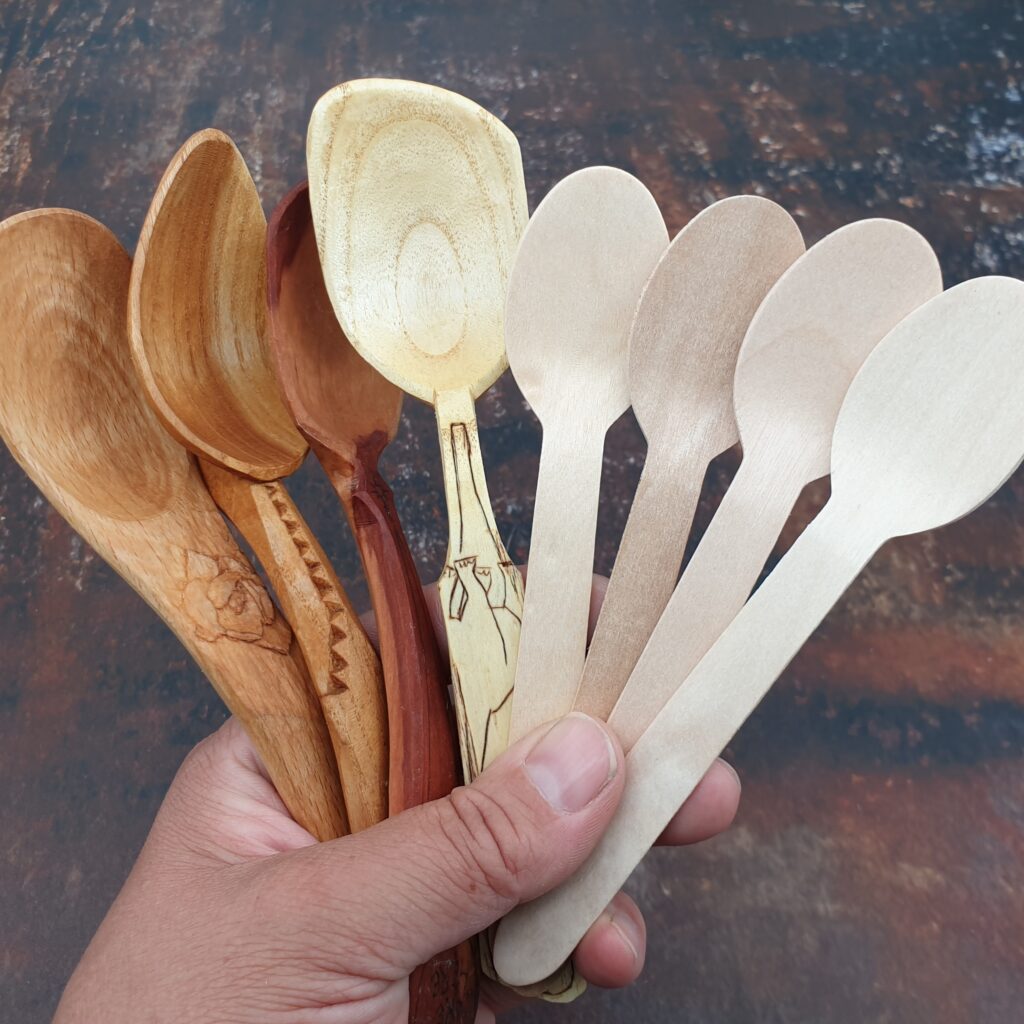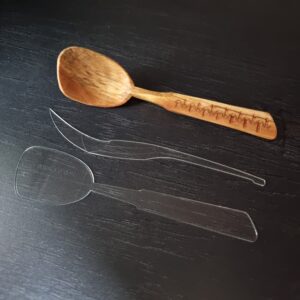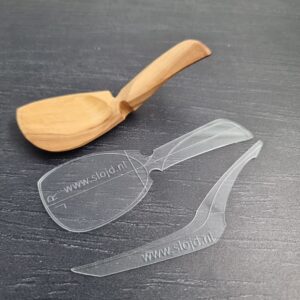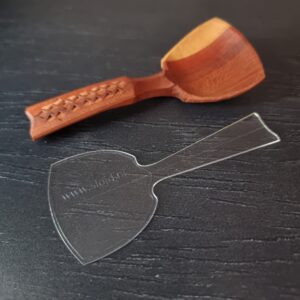“Yuck! What a lousy spoon!!! I couldn’t even eat my soup with it. My whole eating experience has been ruined. I just couldn’t enjoy it. I picked out the meatballs first, then I drank the soup out of the bowl. That doesn’t do any credit the work of the cook, does it? You make better spoons” That was in an app I received, with a photo of a wooden disposable spoon from a company restaurant. Some time later I was given some of those spoons and to be fair, they really sucked. They had just one advantage: they stacked up easily in large quantities. I really wouldn’t be able to eat my soup with it…
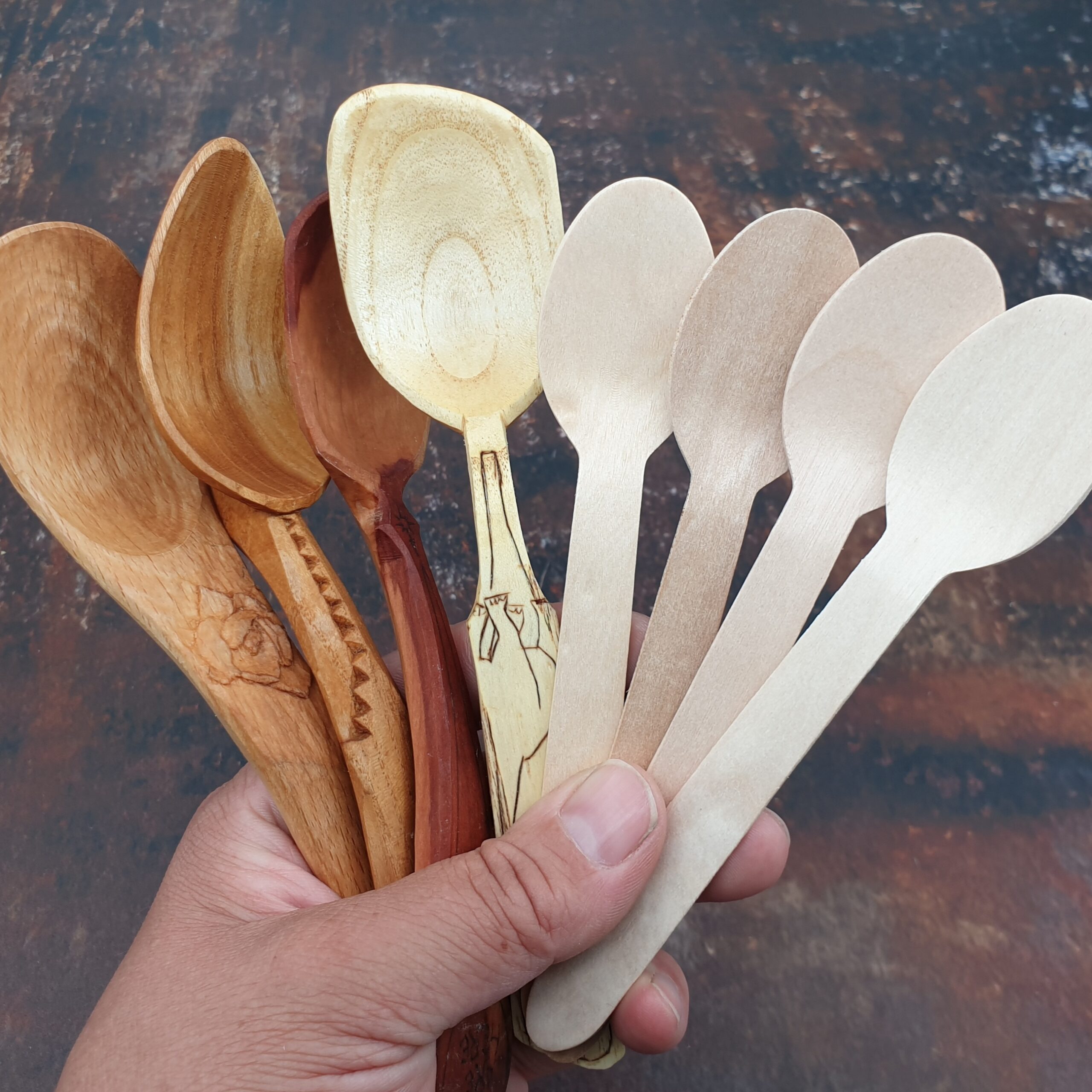
What we can learn from a very bad spoon…
Form follows function
You can’t get it any clearer than that. Form follows function, because a tablespoon is an utensil. A spoon should do what it is designed for. Transport food that is on the plate to the mouth. And preferably without you noticing. Without it taking any effort. And without your clean suit getting dirty.
But what makes a good, usable wooden eating spoon? Let’s take a look at the list of complains that followed, to explore from there what this means for the anatomy of a fine, usable spoon. A warning in advance is in order here. This is a blog for the spoon nerds and the insiders.
The list of complaints
1. I can’t get the soup on the spoon
2. The soup runs off before I reach my mouth with the spoon
3. The spoon is rough and tastes like cardboard
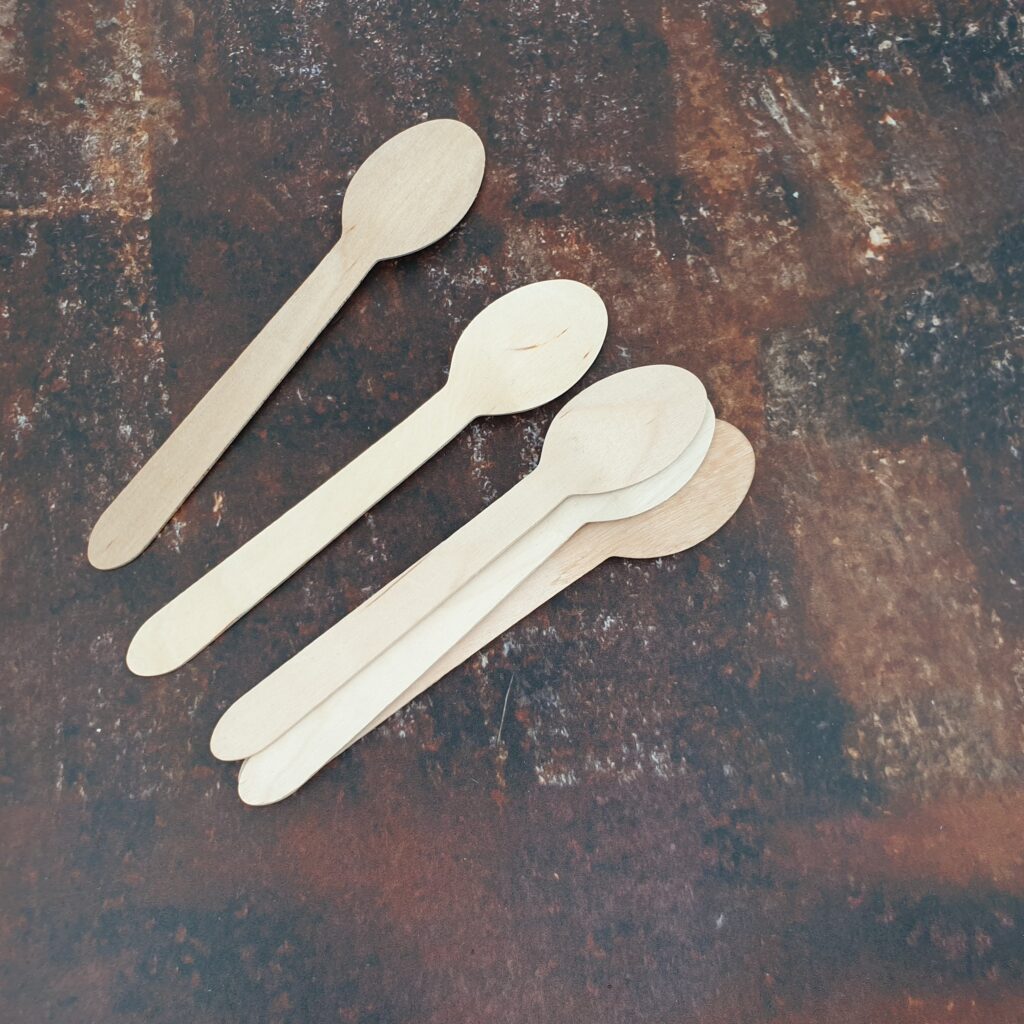
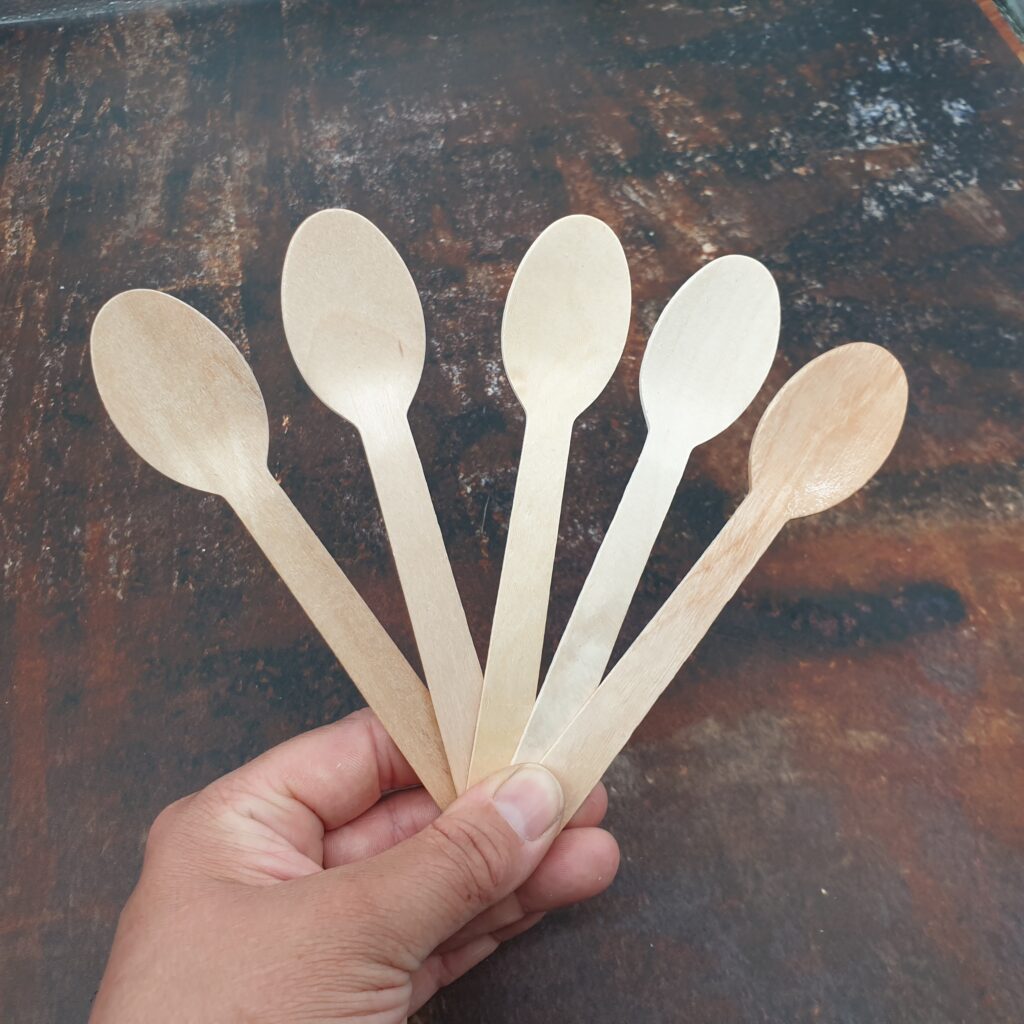
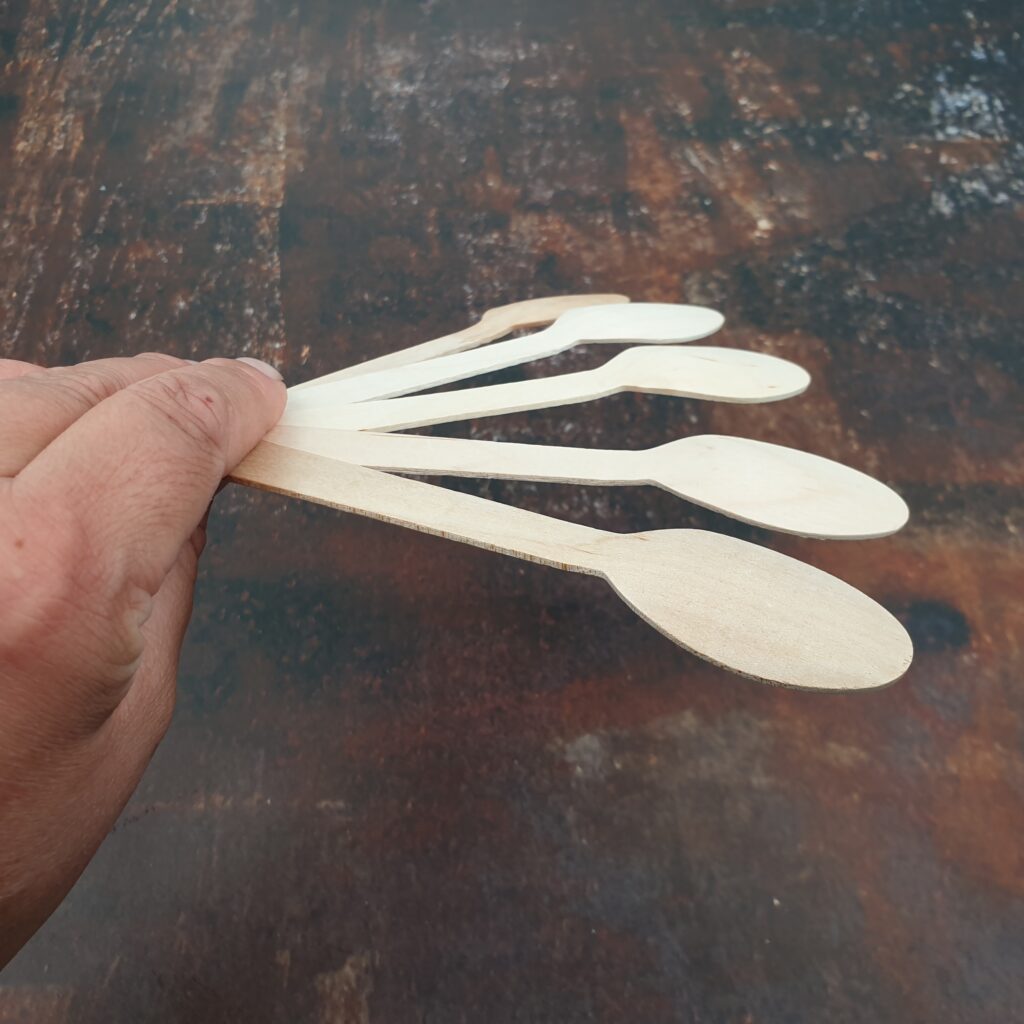
From complaint to function and design
Requirement: a spoon must be able to scoop up food
Curvature
For this, the spoon needs a little curvature, so that it can slide along the plate with the edge of the bowl. Usually this means that somewhere in the bowl, close to the handle, is the deepest point of the spoon. This is about 1/3rd of the handle or less.
The edge
The rim of that bowl should have enough surface to slide along the plate. And that edge has to be thin enough to let the food slide onto the spoon. With a pointed or very oval spoon this is mainly on the side, while with a scoop-shaped spoon the action mainly takes place at the front end of the bowl.
Volume
And when the food slides over the edge of the spoon, it shouldn’t slide right off again or flow away. So you not only need sufficient surface area, but also depth. In short, the volume of the spoon should be right. Volume, as you probably learned in school, is an interplay of width, length and depth. If one of these three is out of balance, you will see that your soup will flow out of the bowl before it has created enough volume for a fine bite.
Try and taste your spoon
A fun way to test your spoon is the water test. Hold your spoon under the tap and let water gently flow into it. What is happening? Does the whole spoon fill up neatly with water or does it run off somewhere? Take a bite. Do you get a nice amount of water in your mouth or is it too much or too little? Does the water run off the sides? Then you have too little depth in the back or your spoon is too narrow. Does the spoon hurt your lips? Does the spoon cut into the corners of your mouth? If the answer is yes, then the angle of the edge is not right or the deepest point where your mouth reaches is deeper than an upper lip is thick.
Test your spoon further. If you have to open your mouth beyond what is comfortable, your spoon is too wide. If you hit the back of your throat, you just get it… too long. In my experience, a width of up to 4.5 centimeters and a length of about 6-6.5 centimeters are ideal for our modern standards.
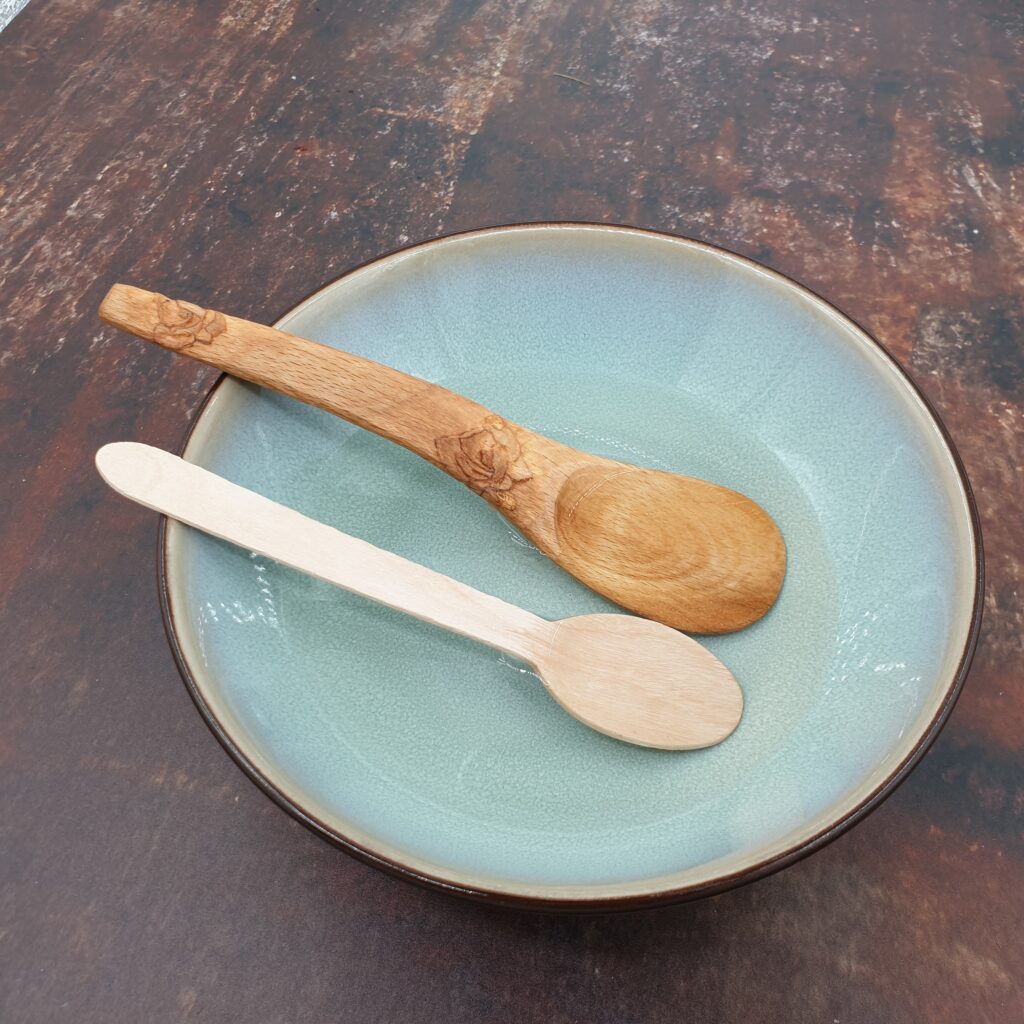
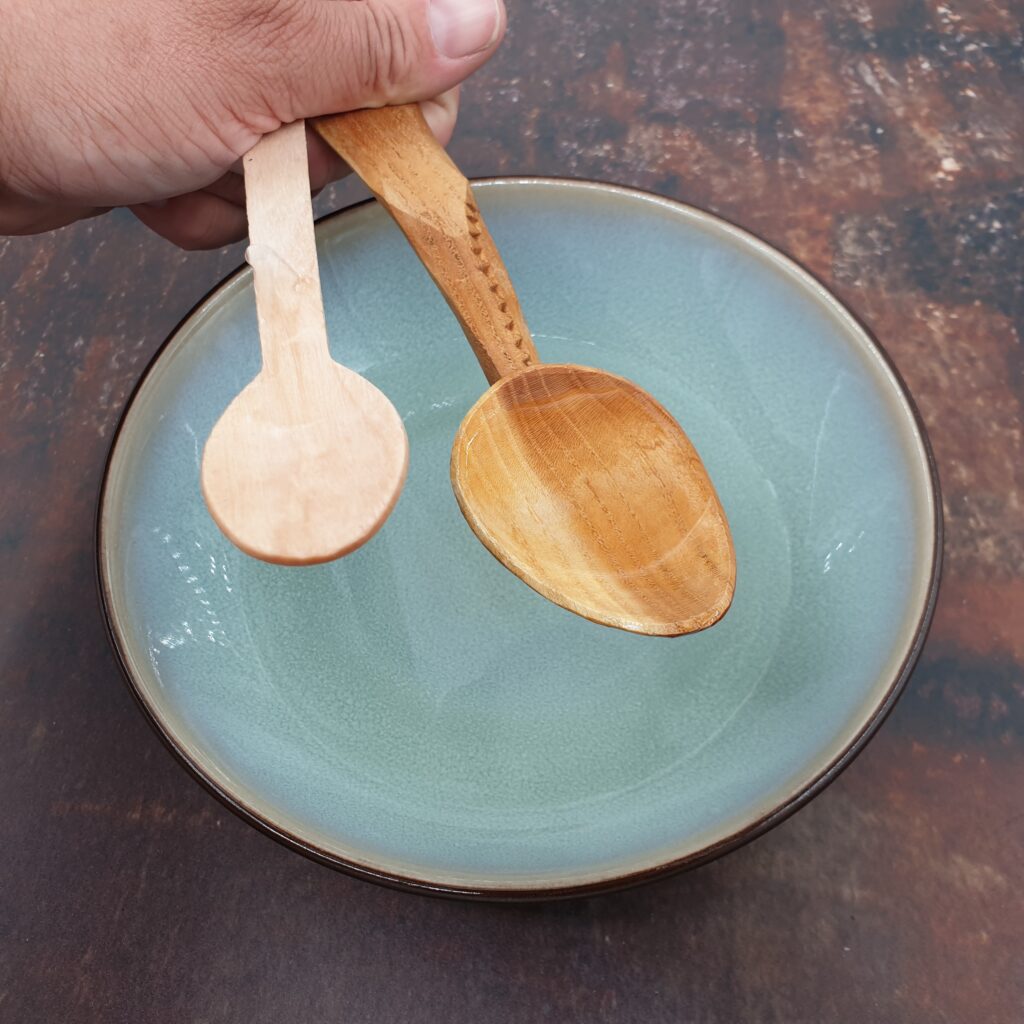
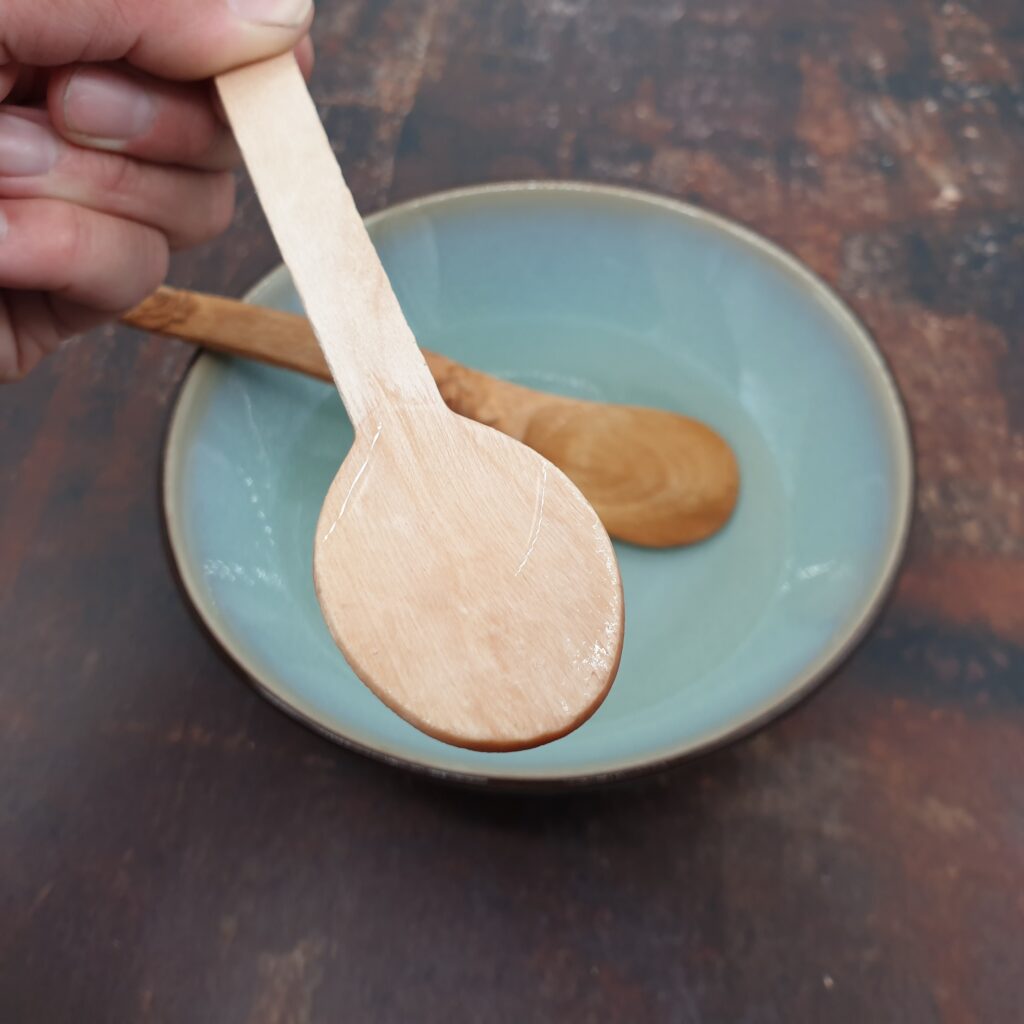
Requirement: a spoon should transport the food to your mouth
All types of food should remain on the spoon until it is near or in the mouth. In order to get the food from your plate to your mouth, you will have to hold the spoon at an angle. Just think of “Here comes the plane!” that we play with small children while eating. The spoon rises, nose up, up to the mouth. This will make your soup flow to the back of your spoon. And so there, at the back, you have make sure that your spoon holds that delicious soup until your plane has reached its destination. And there, in the back of the bowl, thus comes the deepest point.
Requirement: a spoon should be an intimate pleasure item (personal pleasure item)
The insiders will recognize this big nod to the work of spoon carver Rebecca Luerssen (@rebecca_luerssen). If you don’t know her yet, look her up on Instagram.
That brings me to the last and perhaps one of the most controversial topics within spoon carving.
There are very few utensils that you put in your mouth as an adult. And your mouth is a very sensitive sensory organ. Our lips and tongue are full of nerves for motor skills, touch and taste. Our lips choose what we do and don’t want to eat (too hot or cold, for example) and help bring the food into the mouth. Our tongue scans for bones, stones, and other stuff we can’t chew. The tongue helps to spread the food through the mouth and along the teeth. Provides the food with enzymes to aid our digestion and ultimately transports the food to the throat. The tongue also tastes the food and so your spoon!
In the case of the example we started out with, the spoon was so dry and rough that it irritated lips and tongue and absorbed the saliva. So much so that the user thought the spoon tasted like cardboard! This is one of the reasons we finish a hand-carved wooden spoon with a drying oil. We put the spoon in the oil because we like to keep it clean and fresh and smooth enough for a nice mouth experience. However, many of our ‘users’ find that this oil smells and tastes bad. And takes away the pleasure out of eating and so, ruins the eating experience. And they’re right. For this reason, more and more spoon carvers are moving away from treating spoons with an drying oil and are switching to spoon butter. A mixture of beeswax and a non-drying oil like jojoba for example, that has a more neutral odor.
Okay, I think you get it. If a spoon doesn’t feel, taste or smell good, it affects how we experience our food. And nobody wants to eat something dirty, right? In short, test the spoons you make. And look at it with the eyes of someone who isn’t a wooden spoon nerd, someone who doesn’t close an eye to what we consider a small inconvenience.
Carving with a good sharp knife gives a smooth and closed structure in the grain and therefore a pleasant spoon, which actually does not even need to be put in oil. Finishing wooden spoons with oil or some other way is a blog in itself…
I am very curious about your opinion and experiences. What do you think? Oil, no oil? Have you ever analysed what you liked about a certain spoon? Any spoon experiences you want to share? Comment below or at my Instagram or Facebook page!
In the webshop:
